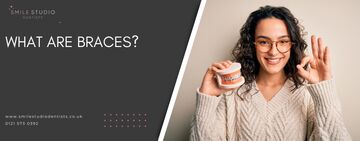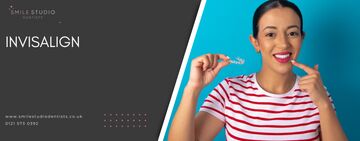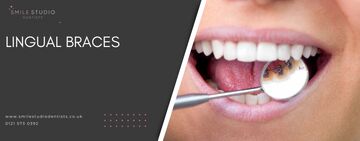
Braces: Types & How They Work
12.03.2024
Braces are growing in popularity with adults and teens alike. For those who are unhappy with the appearance of their smile or alignment of their teeth, braces can offer a simple way to address these imperfections and improve their oral health.
Braces offer more than just aesthetic improvements and should be seen as an investment in your long term oral health and your overall health. Braces can help to address issues with your bite, which can help to improve your digestion and wider health.
In this guide, we’re taking a deep dive into the world of braces so you can determine if this is the right treatment plan for you. We’ll explore what braces are, how they work and the different systems available to choose from.

What are braces?
Braces are worn during orthodontic treatment to help address issues with teeth alignment. As your adult teeth emerge, there might not be enough space for them to emerge in perfect alignment. You could also face issues with overcrowding. In general, your teeth will move into the alignment that offers the least resistance, and this isn’t always perfect alignment.
Teeth are held in place by tendons which offer some flexibility, this means that the alignment of your teeth can be adjusted using braces. Braces are most commonly used during the teenage years, as this is when alignment issues first arise and also when your teeth are more responsive to treatment.
However, a growing number of adults are turning to braces to address alignment issues that have appeared since they have got older. Adults can also wear braces to help restore their smile if they had braces as a teenager but stopped wearing their retainer.

How do braces work?
Braces work in different ways depending on the system that you use. However, there are some similarities in the systems. All braces work by applying pressure to the teeth and encouraging them to move into the correct alignment. Once perfect alignment is achieved, you’ll either wear a permanent retainer bonded to the backs of your teeth, or you can wear a retainer at night time.
Types of braces
There are many different orthodontic systems available, which is good news for picky patients. You can choose the system that best suits your goals and lifestyle, including fixed and removable systems. Before choosing the right alignment system for you, it’s vital to consider how it will impact your life for the duration of the treatment. This will ensure you are able to keep on track with treatment and care for your teeth during this time.

Invisalign
Invisalign is one of the most popular orthodontic systems in the UK. It was inspired by the plastic retainers that patients wear overnight at the end of treatment. A university student wondered why the entire treatment couldn’t be carried out this way.
With Invisalign, your teeth are scanned and then a computer model designs your ideal smile based on the optimum alignment of each tooth. This information is used to create a series of clear plastic aligners that apply gentle and strategic pressure to the teeth. Over time, as the patient works through the aligner series, their teeth gradually move into the optimum alignment.
Traditional fixed braces
The most well-known and perhaps misunderstood braces are traditional fixed braces. With this system, small brackets are attached to each tooth and then a thin wire passes between them. Your dentist adjusts the tension on the wire to apply pressure to the teeth and encourage them to move into the correct alignment.
This method is not removable, so you will need to take good care of your teeth throughout the treatment plan. You might need to adjust your diet and pay special attention when brushing your teeth.

Lingual braces
For those who want traditional fixed braces but would rather have a more discreet treatment plan, you could also choose lingual braces. These are like traditional fixed metal braces but they sit on the backs of the teeth rather than the front.
The treatment is the same, the only difference is that the braces are not visible when you smile. For those looking for discreet teeth straightening options, you could also select fixed braces with tooth-coloured brackets and clear wires. While this is still slightly visible, it’s far less obvious than some braces.
Which is right for me?
You need to consider your lifestyle and time commitment when choosing the right orthodontic treatment for your needs. For example, if you would rather keep your treatment a secret, you’ll have to select a method like Invisalign. However, if you are forgetful and likely to lose your aligners, then you might want to choose a fixed orthodontic treatment method.
How you care for your teeth will also be different depending on which system you use. With fixed braces you might need to change your diet and take extra care when brushing your teeth, but Invisalign does not demand this of the patient.
To learn more about teeth straightening options available to you, get in touch with our team today!